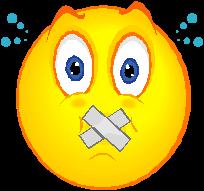 Anyone can develop a canker sore. Canker sores are small, painful red wounds that occur inside of a person’s mouth on the cheek, gums or tongue. The middle of a canker sore can be white or yellow, and may turn a grayish color before starting to heal.
Anyone can develop a canker sore. Canker sores are small, painful red wounds that occur inside of a person’s mouth on the cheek, gums or tongue. The middle of a canker sore can be white or yellow, and may turn a grayish color before starting to heal.
Canker sores can be caused by cheek biting, dentures or braces, as well as vigorous tooth brushing. Sores are also caused by burns from eating foods that are extremely hot. Canker sores can be triggered by many other things such as: emotional stress, food allergies, or the lack of vitamins and minerals in a person’s diet.
Less common symptoms include: Fever, General malaise, or swollen lymph nodes.
First Aid for Canker sores starts with cleaning the sore: The bubbling action of an oxygenating cleanser will help remove food particles and disinfect the area. The easiest home remedy is a mixture of half hydrogen peroxide and half water. Use a cotton swab to apply the mixture directly to the canker sore. Then, dab a small amount of Milk of Magnesia on the canker sore, three to four times a day. This is soothing and may also help it heal.
Another home remedy is to mix half Milk of Magnesia and half Benadryl liquid allergy medicine. Swish this mixture in your mouth for about 1 minute, then spit it out. Be careful when using this remedy with children since the Benadryl can cause toxicity. Canker sores usually heal on their own in 10 to 14 days, and the pain should only last for a few days.
To prevent bacterial infection from canker sores, brush and floss your teeth regularly and get routine dental check-ups. Apply home treatment and call your health care provider if symptoms of canker sores persist or worsen, or canker sores recur more often than 2 or 3 times per year. You should also call your health care provider if canker sore symptoms are accompanied by fever, diarrhea, headache, or skin rash.
Sources:
- US National Library of Medicine: http://www.ncbi.nlm.nih.gov/pubmedhealth/PMH0001993/
- WebMD: http://firstaid.webmd.com/canker-sores-treatment